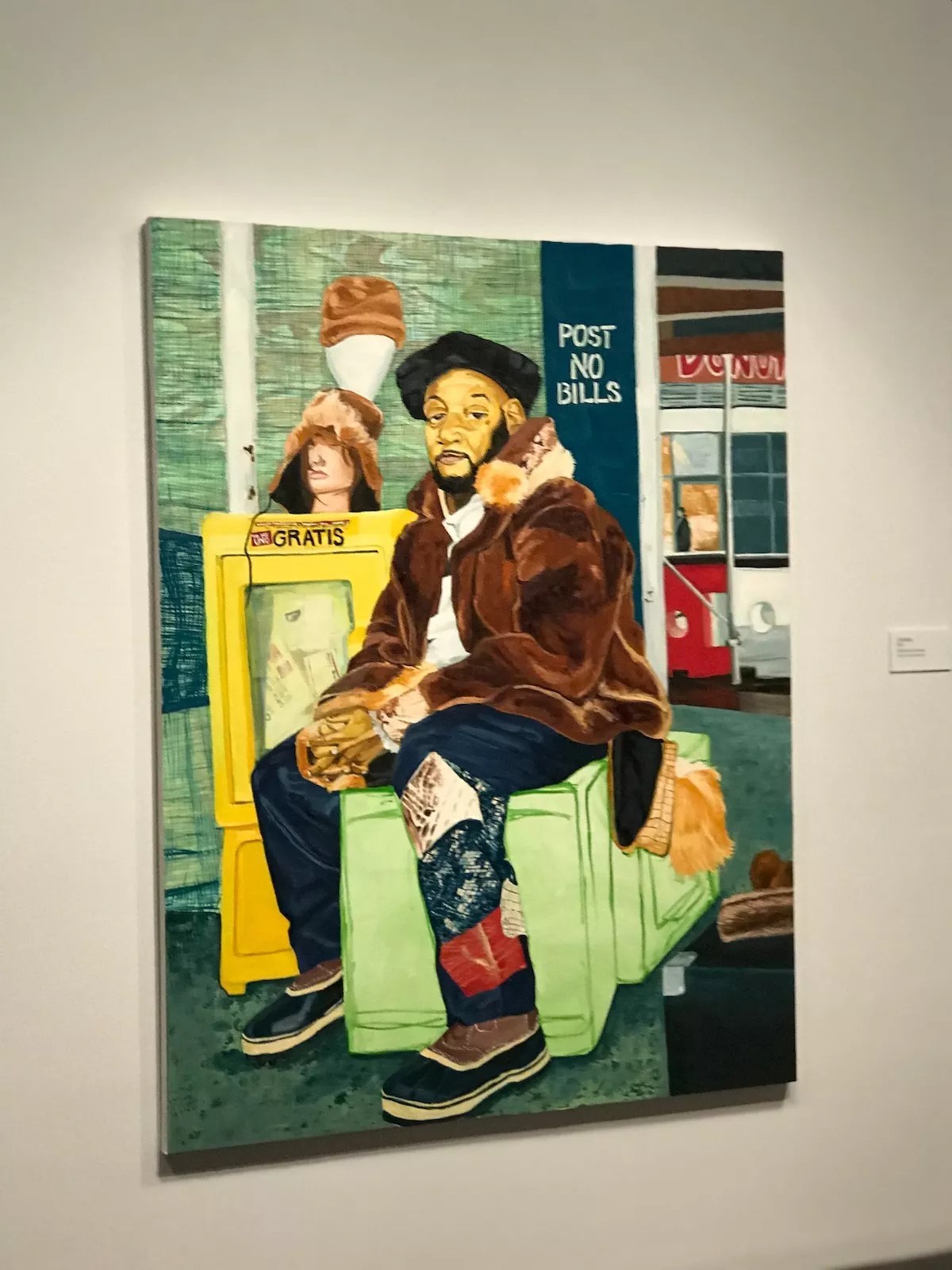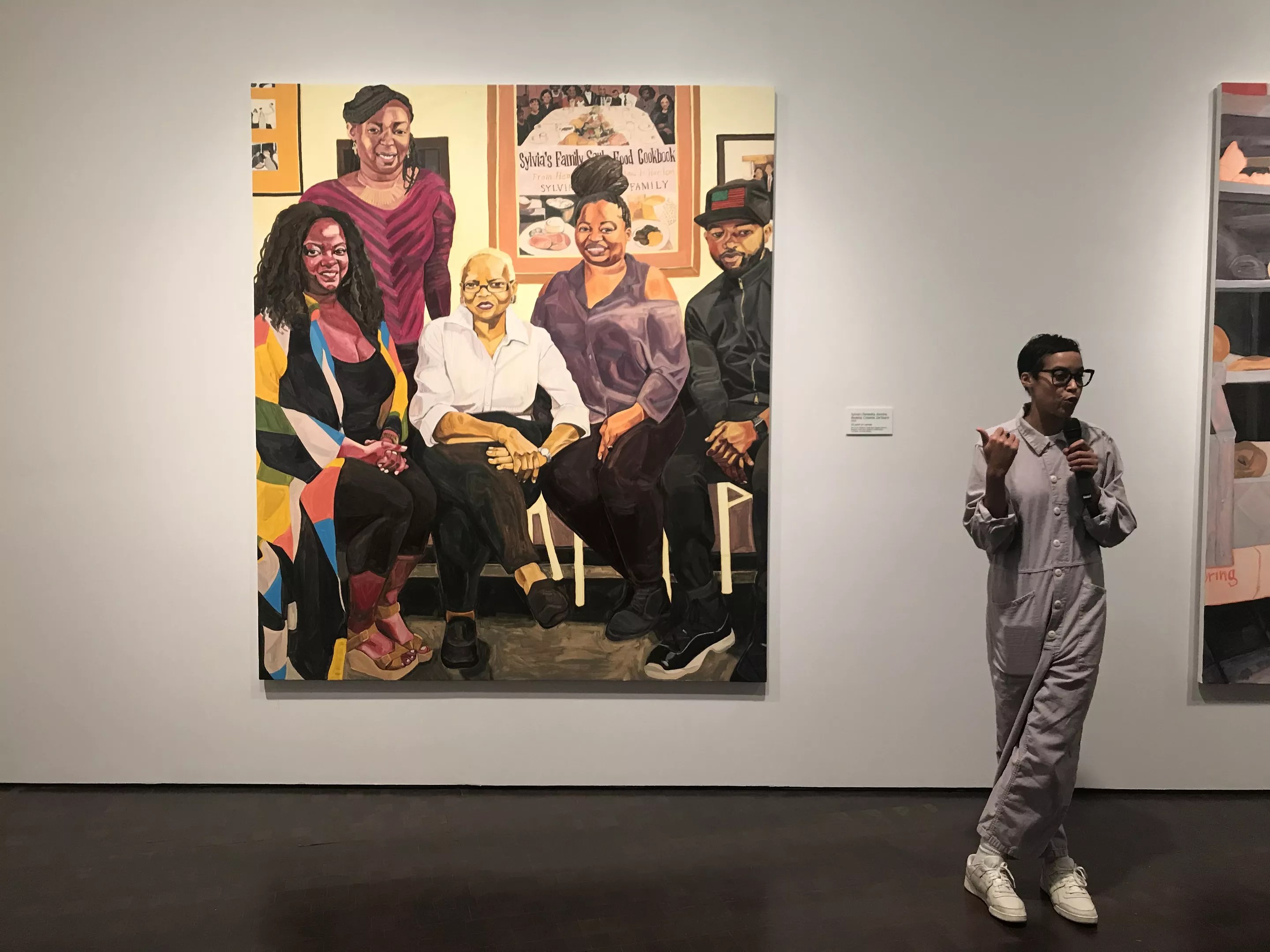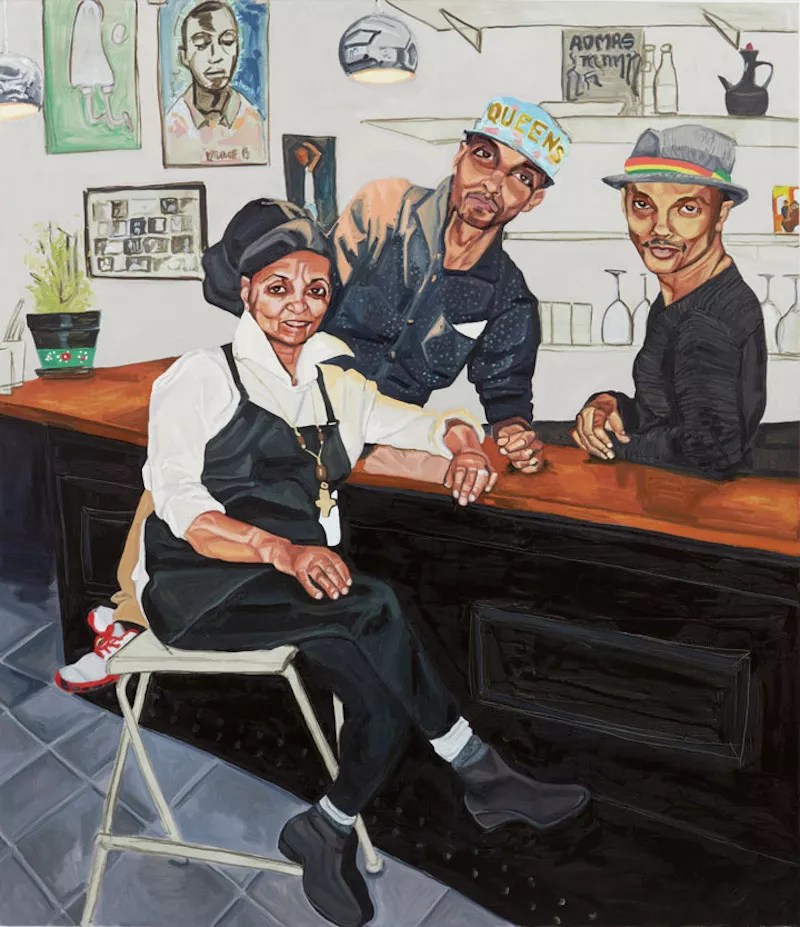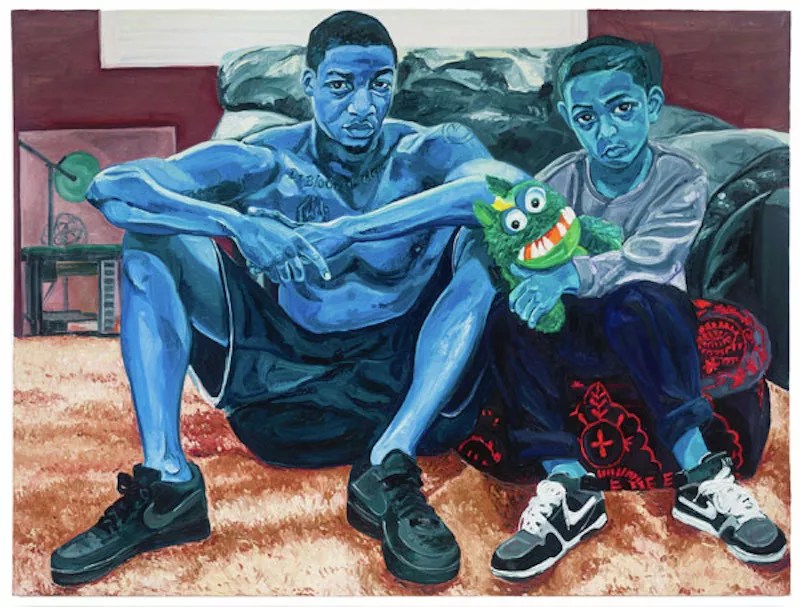
Courtesy of the artist and Casey Kaplan, New York

Audio By Carbonatix
Contemporary portrait painter Jordan Casteel is first and foremost an observer of the everyday people she immortalizes in plain, forthright colors and brushstrokes on large-scale canvases. For the Denver native and acclaimed up-and-coming artist now based in Harlem, her new Denver Art Museum exhibition and her first museum solo, Jordan Casteel: Returning the Gaze, which opens on Saturday, February 2, is a sweet homecoming and a measure of how far she’s come as an artist with sensible Western roots.
“The fact that I grew up in Denver unequivocally played a role in my development as artist and how I’m shaped as a person, through my interests and my influences as a young girl,” says Casteel. “My sensibilities as an observer began here, and there’s literal evidence of Denver in several works in the exhibit showing friends and family of mine.”

Jordan Casteel, courtesy of Adam Green Art Advisory on behalf of a private collection
Denver is where Casteel first took a serious interest in art, encouraged by a teacher at East High School who recognized her innate talent, but she hit her stride as a student at the University of Georgia in Cordona, Italy.
Denver, make your New Year’s Resolution Count!
We’re $14,000 away from our End-of-Year campaign goal, with just a couple of days left! We’re ready to deliver — but we need the resources to do it right. If Westword matters to you, please contribute today to help us expand our current events coverage when it’s needed most.
“It’s something deep within me. I’m not sure a genesis actually happened as much as it just was a part of me. In my first oil paintings while I was abroad, studying in Italy, I did some self-portrait studies,” she notes. “I also painted my colleagues and classmates. I loved Italy.”
It was the place, Casteel adds, where she refined her painting style with new confidence. “There were people in my life and in the world that others didn’t know as intimately as I had. I wanted them to know about people I love and care about, and was explicitly thinking about how to share that with others. And the paintings allowed me to use my sheer love of painting as a way to represent that.”
But Casteel shrugs off the idea that there was ever an aha! moment when it all came together for her as an artist. “It’s something deep within me,” she notes.

Jordan Casteel, Charles, 2016. Oil on canvas. Casteel says Charles, micro-entrepreneur who sells furs, represents the energy of street.
Collection of Jordan Casteel. Image courtesy of The Studio Museum in Harlem, New York
That part of Casteel’s identity has had to make a few shifts since she moved to New York City, and specifically to Harlem. “It grows on you. I paint the people I walk past every day, stopping to talk with some, some just to say hi to. It’s a way of engaging with my community and sharing it with others.” The rhythms of the street and the people she recognizes from her neighborhood exude a different, urban energy that she’s learned to capture on canvas with matter-of-fact honesty, letting their diverse personalities shine.
“I’m in constant conversation with my subjects. They are all looking out and back at me – that’s one of the main things I’ve always asked of people,” she says. “You feel it is a palpable force.”

Casteel’s body of work also often focuses on male figures, some in an earlier nude series and others as familiars and family, but she discounts it as a trend or obsession of hers. “I never really felt that there’s been a time when my works only represented bodies as male,” she explains.
“The female or the essence of woman has never been absent from this work, and in reality, this exhibition will show that: One of the first paintings you see is an early painting of my mom, and there are other women sprinkled through my practice,” she says. “As you move through the newer work, women are also represented. In my work, I recognize my relationship to those I love, and some are men. My own family is saturated with men, and I have a lot of male friends, too.”

Denver-born, New York City-based Jordan Casteel comes home for her first major museum exhibit.
Courtesy of the artist and Casey Kaplan, New York
Arranged in a way that intercuts older pieces with newer ones, out of formal chronology, Returning the Gaze works its magic right from the start. “The first painting you see is called ‘Benyam,'” Casteel explains. “It’s a portrait of a family that runs an Ethiopian restaurant in Harlem that I frequent a lot, so the present is what hits you first. Around the corner, there’s a portrait of my mom and other work made in Denver, some of them addressing relationships between black men: fathers, sons, brothers, cousins. Then you come around another corner and get a sense of the paintings I made as I transitioned to Harlem.
“It ends with more recent works representing my subway series,” Casteel continues. “Since my time in grad school, I like to make these cropped paintings of people’s hands: my mom’s hands, hands in a barbershop, New York people’s hands on the subway.” It’s a different, smaller view of humanity, that furthers the show’s aim to acknowledge the ordinary details of being human. “I hope some museum-goers and viewers are one of two types: people who are engaging with the museum and art maybe for the first time, seeing themselves reflected; and collector types, who might see something they maybe haven’t seen before but feel connected to, regardless.”

“Miles and Jojo,” by Jordan Casteel, oil on canvas, 2015. Collection of Bernard I. Lumpkin and Carmine D. Boccuzzi.
Image courtesy of Sargent’s Daughters, New York.
“It looks great,” Casteel says of the finished presentation. “We spent a long time moving paintings around in minute distances from one another, like two or three inches one way or the other. It can make paintings sing in ways you don’t recognize.”
And Casteel thinks there are other revelations to be had by viewers walking through Returning the Gaze. She’s still on a high, seeing it come together in her home town: “Man, I am truly in disbelief! I had an opportunity to walk through the exhibit with my parents, and I have to admit that tears were shed. I’ve been compartmentalizing in the gallery, trying to process who I was as child and how I’ve now really blossomed into someone none of us could have imagined. It’s like a dream, but a dream with tangibility.
“How do you get work on the walls of a museum? The idea is so abstract, and now it’s happening!”
Jordan Casteel: Returning the Gaze opens at the Denver Art Museum, 100 West 14th Avenue Parkway, on a convenient date – February 2, the DAM’s Free First Saturday – and runs through August 18. The exhibit is included in the regular DAM museum admission fee of $8 to $13, or free for members and youth ages eighteen and under. Learn more at the Denver Art Museum website.